The Stewarts of Annat, Ballachallan, and Craigtoun
By John Stewart of Ardvorlich (1904-1965)
Stewart Society Magazine, Vol. XI, 149 (undated, ca. 1960)
The following is a transcription of two articles which originally appeared in “The Stewarts”, the magazine of the Stewart Society. This copy is extracted from The Clan Steuart – Stewart – Stuart, 800 to 1970 AD: The Genealogy of the Family of Steuart (in Maryland, USA), by Gladys P. K. Nelker, 1970. Nelker did not provide the original date of publication, but it is estimated to be circa 1960. Parenthetical footnotes ( ) are from the original. Square braced notes [ ] are my own editorial additions to aid the reader.
Headings and formatting have been modified from the original for ease of reading.
For our accounting of these families, go to:
No account of the history of these Stewart families seems to have appeared in the Society’s Magazine, if Colonel Stewart Henderson’s article on Major-General Robert Stuart of Rait be excepted. (See Vol. VIII, No. 4, 1950) Therefore I am putting on record such information as I have collected from various sources, but I realise that there are still many gaps to be filed, and it is my hope that others using this as a firm base may be able to add to this history and correct it where necessary. In particular, I regret that I have not had access to Mr. Kenneth Moody-Stuart’s notes on the original Annat family.
(The main sources of information for this article are:-
(a) Duncan Stewart’s History of the Stewarts;
(b) Correspondence with Mr. K. Moody-Stuart of Annat;
(c) Ardvorlich Papers;
(d) Robert Louis Stevenson and the Scottish Highlands (sic – Highlanders), by David B. Morris.)
The Stewarts of Annat
The traditional account of the origin of this family was narrated to my great uncle by a local worthy, Donald Maclaren of Ardveich. (Ardvorlich Papers) This Donald was known locally as “Chiefie Ardveich,” he was undoubtedly descended of a long line of MacLarens, who had once owned Ardveich and had been chiefs of a considerable tribe of clan Laurin in the loch Earn district, in fat, in early times Ardveich had gone by the name of Ardveichlorne.
A legendary account
‘…And the Stewarts of Annat too, they spring from the Ardvorlichs, did ye ever hear tell hoo that was?
‘It was in the time of Duncan Dubh, Duncan o’ the Castles they ca’d [called] him, for he built mony a ane [many a one], and he lived in the Castle o’ Finlarig himself.’ [Black Duncan Campbell of Breadalbane built Finlarig Castle in 1629.] He had a dochter that ga’ed wrang wi’ [went wrong with] the Ardvorlich o’ that day (it was afore the Major’s time) [referring to Alexander Stewart, 1st of Ardvorlich] and she had a fine strapping lad for a bairn [child] – well-faured [favoured] and handy wi’ the broad swaird [sword] and at a’ games o’ strength. When he grew to man’s estate, he sought to his father Ardvorlich [sic, Alexander Stewart, 1st of Annat, was a nephew to Ardvorlich, not a son] for employment and maintenance, but Ardvorlich would hae nane o’ [have none of] him, but bad him gang [bid him go] to Duncan [Campbell], his grandfather, who was a richer man nor himself, and better able to provide for him.
‘So young Stewart sets off to Finlarig to the auld man, and speirs [asks] at him for wark [work]. Now Duncan (it was him the Breadalbane family a’ cam frae [came from]), was a black, sly and greedy man, and wasna going tae be fashed [provoked to anger] wi’ this youngster aye speiring at him for siller, so he thought upon the best way o’ getting rid o’ him. At that time, Duncan was much troubled wi’ the MacGergors in Glendochart, which was part o’ his possessions, and he had placed there a strong man, his ain sister’s son, that was ca’ed Baravarich, to hold the MacGregors in check.
‘Baravarich was a great man o’ the sword, and a wild and fierce man; so says Duncan to Stewart, “there’s Baravarich now, in Glendochart, he’s been sair [sore] displeasin’ tae me, liftin’ cattle and haddin’ [holding] the whole countryside in fear, him and his swashbucklers – if you would do for him, it’s a thousand merks that I would pay you for the same.” He thocht [thought] that by setting Stewart on to Baravarich he would easy get rid of him, for in any quarrel that might occur Baravarich was sure mak slauchter o’ [make slaughter of] such a young man.
‘But Stewart nothing daunted ga’ed straicht [went straight] to Baravarich and when he arrived at this house, he found the young men playing at the putting stane [shotput stone] wi’ their maister, and they asked him to tak a throw. He pleaded that he was a stranger, and didn’t like to throw against Baravarich among all his people, but they pressed him, and at last he putted, and cast the stane further than Baravarich could, which sore nettled him, and he challenged Stewart to wrestle, but this Stewart positively refused to do in the presence of all Baravarich’s people, but on being pressed said, “Come up wi’ me to the back o’ yon hill wi’ none there but ourselves, and I’ll wrestle wi’ you.” To this Baravarich agreed, and they went out of sight of his people and set to. But Stewart threw him, and when he was down, dirked him too, and then out wi’ ‘his claymore, and off with his head and into his plaid wi’ it, and then set off for Finlarig as hard as he could.
‘Duncan was in his private room when he arrived, and he was at first refused admittance, but he would not be gainsaid, and went straight into this presence, and out wi’ the pow and on to the table wi’ it demanding his fee.
‘When Duncan saw the result of his stratagem to get rid of young Stewart, he was horrified, and rising up said, “You have slain my own sister’s son! The hand of every man will be against you, and I will be against you too.” But before he could give any alarm, Stewart, who saw the state of affairs, sprang upon him, and holding the point of his dirk close to his heart said, that there was just that distance between him and his death, unless he at once gave him four times the stipulated amount! This Duncan was fain to do, and Stewart possessing himself of the money, and binding and gagging Duncan, locked him up in his own room, and took to his heels.’
After a time, when Duncan had been discovered tied up, he was pursued, but he had a long start, and made his way across Glenogle, and took refuge at Ardvorlich, where he was protected from the vengeance of the Campbells.
‘It was wi’ this money he bocht Annat and founded that family. He built a castle there that was afterwards destroyed, and no man knew where it had stood until they came upon the foundations of it while draining, in my father’s time.
Aye, aye, — yes, that was the origin of the Stewarts of Annat.’
John Stewart, 1st of Portnellan, Predecessor of Annat
Unfortunately, this delightful story bears little relation to the generally accepted descent, but, in my experience folk tales are rarely pure invention. They are nearly always based on some event which did take place, though many have become garbled in the course of the centuries; dates have often gone awry; generations have got mixed up. It may be that this tory really concerns an earlier Baldorran Stewart, for it seems impossible that it could concern John Stewart, the progenitor of Annat.
According to Duncan Stewart, local tradition, and the records of the Ardvorlich family, John Stewart, progenitor of Annat, and the cadet families of Ballachallan and Craigtoun, was the second son of James Stewart called of Baldorran or of Balquhidder, and younger brother of Alexander Stewart who settled at Ardvorlich about 1575.
This James was the son of Walter Stewart of Baldorran, who succeeded his father, William as Baillie of Balquhidder, circa 1504. William had married a daughter of Sir Colin Campbell of Glenurchy (Black Colin of Rome). John Stewart, if the tale be accurate, had visited his great-great-grandfather! Actually, Colin died in 1475, long before John was born. Duncan of the story was Colin’s son.
[Editor: The author suggests the Duncan of the story is Duncan Campbell, 2nd of Glenorchy, but does not take into account the possibility that the Duncan Campbell in the story might be Duncan Dubh (“The Black”) Campbell, 7th of Glenorchy (1545-1631), whose son Patrick Campbell was 1st of Edinample. This Duncan had a reputation for castle building, including having built Finlarig, which matches with the story and his son owned the property next door to Ardvorlich. He would be close to the right age to have a daughter who may have had relations with John Stewart, predecessor of Annat, and been mother to Alexander mac Iain Stewart, 1st of Annat (1564-1647). There is no record of such a relationship in Campbell records. And Stewart records give John Stewart’s wife as unknown.]
Alexander Stewart, 1st of Annat
John Stewart, first of the Annat line, was probably tenant in Annat towards the end of the sixteenth century. Annat formed part of the Muschet Estate, and lies in the Braes of Doune. The name of his wife has not come down, but he had a son, Alexander, who bought Annat from James Muschet of Burnbank in 1621;
Alexander [1st of Annat] married a daughter of Macnab of Acharn and had five sons,
- John [2nd of Annat], who succeeded him
- Walter
- Andrew
- James, who was the ancestor of Major-General Robert Stewart of Rait, of whom later.
- Archibald, who according to Duncan Stewart, was the great-grandfather of Alexander Stewart of Glassingall, Writer in Stirling. Janet Stewart of the Glassingall family was the wife of John Jaffray, Jacobite Provost of Stirling at the time of the ’45. (Morris)
Alexander was a man of some importance, as his gravestone in the ancient Kilmadock kirkyard testifies.
‘Here lys the worthie and honorable Alexander Stewart of Annat, who died 14th January 1647. His age was 76 years.’
A curious tradition regarding Alexander was narrated to me by Mr Stewart Thomson, Garthonzie, whose mother’s family, Stewarts, have been resident in Buchany for many generations. ‘Alexander and two men, the other two being sib to him – possibly Craigtoun and Coilichat – were concerned circa 1630 in the hanging of two Highland girls at the Bogle Brig, 1-1/2 miles on the east side of Doune. They had stolen a web of cloth from a weaver’s widow in Burn of Cambus in order to cover their nakedness. The women were caught and hanged, and with their last breath they cursed their captors, prophesying that none of the three would die in their beds Their prophecy was fulfilled, for Alexander his said to have committed suicide, and the other two met violent deaths.
Annat Castle, the residence of the Stewarts of Annat, must have been built by Alexander, unless it was bought with the estate from the Muschets. The site of the castle can still be traced on the bank above the Annat Burn. Annat, which is [a] fairly common place name in Scotland, comes from the Gaelic, Annait, meaning a chapel or cell. The site, therefore, is a very ancient one.
John Stewart, 2nd of Annat
Alexander [1st of Annat] died in 1647, and was succeeded by his eldest son John. This John [2nd of Annat] was twice married, his first wife being Janet, daughter of Gespard Graham of Gartur. By her he had two sons:
- Alexander [3rd of Annat] who succeeded
- Duncan who purchased Ballachallan.
He married secondly, Elizabeth, daughter of John Campbell of Kinloch, and had issue:
- William, who purchased Craigtoun
- James, Lieutenant-Colonel of the Scots Regiment of Horse Guards and Deputy Keeper of Edinburgh Castle, who left issue. (For details of Colonel Stewart’s career, see Mr. K. A. Moody-Stuart’s article in Scottish Historical Review, Vol. CCI, No. 81, of October 1923.)
- Charles, who left issue
- Captain Henry
- Robert, a surgeon in Doune
- Janet
- Jean
- And John Dow Stewart in Glenfinglas, probably a natural son, for in 1635 Alexander Stewart of Annat, John Stewart fiar thereof, his son, John Dow Stewart in Glenfinglas, appear in the Privy Council Register as cautioners for Robert Macfarlane, a rebel. (1635, Register of the Privy Council, Vol VI, 2nd series, pp. 104-5.)
John [2nd of Annat] is mentioned on several occasions. In 1645 as a signatory to the Stewart Alliance. (Ardvorlich Papers) [sic – this is likely a typo reference to the Bond of Keltney Burn signed in 1654, not 1645.] In 1648 as a member of the Commission for Broken Men. (A. of P. Scot., Vol. VI, Johne Stewart of Ainnat.) In 1655 in an action for Horning against Colin Campbell of Mochaster. (Vol. XXXIII, Sheriff Court Books of Perth.) Finally, his testament was given up at Dunblane in 1666. (Dunblane Comm.)
Alexander Stewart, 3rd of Annat
Alexander [3rd of Annat], John’s eldest son, succeeded as fourth of line. He married Janet, daughter of Edmonston of Hermit’s Croft, by whom he had one son, Alexander, and four daughters, who all married. In 1685, Alexander Stewart of Annat is mentioned as one of the commissioners for the protection of the Shire of Perth and places adjacent against invasion by Argyll. (Register of the Privy Council, 25th May 1685, and Military History of Perthshire.) His testament was given up at Dunblane in 1698.
Alexander Stewart, 4th of Annat
Alexander [4th of Annat] who succeeded, married Isobel, daughter of Mr John Fullarton, of Greenhall, Bishop of Edinburgh. By her, he had two sons and several daughters.
- John [5th of Annat], who succeeded him
- Duncan, a surgeon, who died in the East Indies
- Isabel, who married Alexander Stewart of Ballachulish (Stewarts of Appin, p. 181, and Trial of James Stewart in Acharn.)
- A daughter, who married James Stewart of Innishchaorich (of Invernahyle descent.) (One of those daughters may have married James Stewart of Tarr as his second wife, or possible a daughter of grand-daughter of Isobel and Alex Stewart of Ballachulish. James Stewart of Tarr had by her one son and five daughters, all unmarried – known as the Miss Stewarts of Doune.
Alexander [4th of Annat] was out in the ’45, and, with his cousin Ballachallan, served in the Perthshire Squadron of Horse. With them he took part in the march to Derby and the subsequent retreat, and was at the Battle of Falkirk. (Jacobite Lairds of Gask, pp 178-79 and 183.) There is a curious story about Annat at this time, narrated by Mr Stewart Thomson.
‘After the collapse of the rebellion at Culloden there was a garrison of redcoats at Lanrick Castle, close by Annat, and the men were employed in rounding up Jacobite fugitives who were hiding in the Braes of Doune and that vicinity.
‘Word came to the redcoats that some rebels were hiding at Annat Castle, so they set off to catch them. When they got there the Lady of the House came to the door and requested that as she was alone only the Captain should come in and search the house. When he acceded to her request, she led him down a passage to the living room. The doorway was low and there were two steps. She purposely stumbled, hit her head on the lintel, fell, and the candle she was holding went out. The Captain tried to assist her and while doing so the fugitives escaped out of the window at the back, and then down a precipitous bank into the Annat Burn.’
There is a version of this story in David B Morris’s Robert Louis Stevenson and the Scottish Highlands, page 49 et seq., in which two ladies are mentioned and are named as Miss Peggy and her sister Annie. The story is quoted from Cornhill Magazine 1869.
John Stewart, 5th of Annat
John [5th of Annat], who succeeded Alexander [4th of Annat] about 1761 (Alexander was certainly alive in 1755. Ardvorlich Papers.) had two daughters, Anne and Margaret, which bears out the above story, and he may have had a son. In a list of the names of those who were officers in the Appin Regiment, and of certain others who fought with it during the rebellion appears the following:
“Stewart, Donald – Annat, in Perthshire. Probably a nephew of Alexander Stewart, 4th of Ballachulish. Wounded at Culloden.” (The Stewarts, Vol. IX, No. 2, 1952, p. 172)
This does not prove that John did have a legitimate son, but apparently he did have a grand-daughter, for, after John died and Annat was sold, General Stewart of Rait paid an annuity to his cousins, Miss Ann and Miss Margaret Stewart and to their niece, Margaret Stewart. (Ardvorlich Papers)
John does not appear to have taken part in the ’45, but he evidently was suspected of having Jacobite sympathies, for when James Stewart of the Glen made his famous journey to Edinburgh, Annat was one of the many Stewart houses he visited. Subsequently, when James of the Glen was arrested, a warrant was issued for the search of the House of Annat, and John was warned as a witness at the trial, though he was not called. (Robert Louis Stevenson and the Scottish Highlands)
When John died he was succeeded by his eldest daughter, Anne, but his affairs were in a bad state and Annat had to be sold. It was bought by the Earl of Moray. The sisters removed to the house of Offrance, where Margaret died in 1800 and Anne in 1804. Both the sisters and their niece received an allowance from their cousin General Stuart of Rait, whose lineage now follows. (Ardvorlich Papers)
The Stuarts of Rait
James, second or third son of Alexander, 1st Laird of Annat, married Margaret, daughter of Graham of Boquhapple, in Menteith. They had two sons, John and Charles.
- John married Margaret, daughter of Allan Stewart of Inneschaoraich (Glenlochay), an Invernahyle Stewart. They had at least two children:
- James, who married a Stewart (of Appin and Annat descent), who was brought up at Annat, possibly his first cousin, a daughter of James Stewart of Inneschaoraich by his wife, a daughter of Alexander Stewart of Annat. James was tenant in Drumvaich, which lies near Annat, between Doune and Callander. He had a daughter Ruth, who married Archibald MacLaurin, and a grand-daughter, who married John Stewart of Glenbuckie.
- Margaret, who married Robert Stewart of Ardvorlich.
- Charles in Milton of Cambus, who had a son, Alexander in Powblack of Frew, and another son, whose daughter was called Jean. Alexander married Isobel, daughter of Robert Miller in Kilwinning of Culcreich. This Alexander was the father of General Robert Stewart of Rait, whose history was given in Colonel Stewart Henderson’s article. The General must have had a brother, who died before 1800, for he had a niece called Jean, to whom he paid an annuity.
Part Two: The Stewarts of Ballachallan
By John Stewart of Ardvorlich
This article is a continuation of an article entitled “Stewarts of Annat, Ballachallan, and Craigtoun” which appeared in the last issue of this magazine, Vol. XI, 149.
Duncan Stewart, 1st of Ballachallan
According to Duncan Stewart, author of A History of the Royal House of Stewart, Duncan Stewart who bought the Estate of Ballachallan, was the 2nd son of John Stewart [2nd] of Annat, third of that line. Ballachallan lies within a few miles of Annat, some three miles to the south of Callander, and now forms part of the Cambusmore Estate. Ballachallan is a small estate and Duncan must have acquired it some time after 1649 for, in The Rental of Perthshire of that date, it belonged to one, Walter Graham. (Burke’s Landed Gentry, Grahame of Over Glenny.)
(The sources of information for this article, other than where specifically stated, are:– Duncan Stewart’s History of the Royal House of Stewarts; Ardvorlich Papers; Argaty: It’s Lairds and Barony Book, by Alex B. Barty; Ardvorlich Correspondence; Dunblane Commissariat Records; Register of Testaments.)
George Stewart, 2nd of Ballachallan
George Stewart, his son, married Mary, daughter and eventual heiress of Harie Home of Argaty. The Homes of Argaty were an ancient and important family of that neighbourhood, and Argaty was a much larger and more valuable property than Ballachallan. By Mary Home, George had four sons and several daughters, one of whom, Janet, married Walter Graham of Nether Glenny.
George must have died before 1751 for Mary Home, described as his widow, succeeded her brother, George Home of Argaty, in the Estate of Argaty in that year. David Home Steuart, their eldest son, was served heir to this grandfather, Duncan Stewart of Ballachallan, in that same year. (Duncan Stewart writing in 1739 calls David Steuart ‘now’ of Ballachallan.)
David Hume Stewart, 1st of Argaty, 6th of Annat, and 3rd of Ballachallan
David Home Steuart, 3rd of Ballachallan, was ‘out’ in the ’45. At one time he commanded the garrison of Doune Castle in the Prince’s interest (though some authorities ascribe this to his brother George). (Red Book of Menteith, by Sir Wm Fraser.) He died without legitimate issue, but had a natural son, Donald, said to have been killed at Culloden when serving with the Appin Regiment. (Stewart Society Magazine, Vol. IX, No. 2, 1952, p. 172.) David died sometime after 1768, when he executed an entail of his estates and was succeeded by his next brother George. (There was some doubt whether Sophia Home, Dr. George’s grand-daughter, could inherit, or whether Charles her uncle was the heir. It was decided in favour of Sophia.)
David Steuart of Ballachallan is the subject of a very curious historical ‘mix up’. In Prisoners of the ’45 he is described as ‘David Stuart or Stewart of Ballachallan, a Major in Lord George Murray’s Regiment. (The Atholl Brigade) was brother of Stewart of Ardvorlich.’ The account of David goes on to say that he was taken prisoner on the 13th of July 1746 whilst hiding in the Braes of Leny. He put up a stiff fight, but was finally wounded and overpowered. He was taken to Stirling and confined in the Castle, where he died of his wounds. The evidence brought against him was ‘that he was seen at Dumblane dressed and armed like a rebel Highlander wearing a White Cockade. Others stated that he acted as a rebel officer in taking possession of Castle Doune with a body of armed men.’
Now David Stewart of Ballachallan was not a brother of Ardvorlich, but the Ardvorlich of that date, Robert Stewart did have a brother David who died in the Tollbooth of Stirling in November 1746. In his Testament, given up in 1748, he is described as David Stewart, brother germane to Mr Stewart of Ardvorlich, in Glenfinglas. Executor George Home of Argaty. He left some money to his son, James, if alive.
In my family records the story of the wounding and capture of David Stewart attributed in Prisoners of the ’45 to David of Ballachallan, is attributed to David in Glenfinglas. Again, in Prisoners of the ’45 there is mention of a Major James Stewart said to be son of Major David Stewart. David Stewart in Glenfinglas must have been about sixty at that time so may well have had a son who held the rank of Major, and he did have a son called James. (In the Atholl and Tullibardine Chronicles there is mention in an MS Roll of those engaged in the ’45, that David Stewart had a son, Major James Stewart, who was ‘out’ and that he was capture.)
There is a further mix up. In an enquiry in 1748 into ‘treasonable practices against various gentlemen who were out in the Rebellion,’ evidence was raked up against David Stewart of Kynachan (though it is stated in The Atholl and Tullibardine Chronicles that Kynachan was killed at Culloden.) Cornelius Inglis, surgeon, late Dean of Guild of the Burgh of Lanark, stated that “about Christmas 1745 a party of rebels came to the place on their way from England and he saw… and one called Major David Stewart who said he had an estate within five or ten miles of Stirling, but has forgot what style he bore and declares that he saw the said Haldane of Lanrick and Major David Stewart, as they were called, bearing arms, and that the said David Stewart acknowledged to the deponent that he had been twice in the Rebellion already.” This evidence undoubtedly refers to David of Ballachallan whose estate lay some ten Scots miles from Stirling, and who would naturally be with Haldane of Lanrick, a near neighbour.
There are certainly curious features about this whole story. David of Ballachallan, who had been thoroughly implicated in the Rebellion, apparently succeeded to his grandfather’s estate in 1751 and to part of Argaty, and lived a public and peaceful life for many years after. His brothers, George and William as thoroughly implicated, had to fly to America. A Donald Stewart, said to be a son of Ballachallan, settled in Aberdeenshire after Culloden, one would suspect well away from incriminating relations and associations. (I have lately had some correspondence with Captain B. G. Stewart, Milton Cottage, Morhamchurch, Bude, Cornwall, who is descended from a Donald Stewart who settled in Hythie, Aberdeenshire, after Culloden. According to his family tradition, supported by a letter written by his forbear George Stewart in 1848, this Donald was of Ballachallan Stock.) David’s estates, so far as I am aware, were not amongst those forfeited after the ’45. (Ballachallan was one of the houses visited by James Stewart of the Glen on his journey from Edinburgh to Appin.)
Editor: We, too, had encountered the conflation of the two David Stewarts of Ballachallan just as the author describes, as well as the mystery of the illegitimate son of one of them, Donald Stewart in Hythie. While we agree, for the most part, with the conclusions of the late and esteemed John Stewart, 14th of Ardvorlich, author of this piece, we differ slightly in our interpretation of the evidence surrounding David Stewart, 3rd of Ballachallan, and in how we account for the origins of Donald Stewart in Hythie. For more information, see our Stewarts of Ballachallan and our Stewarts in Hythie pages:
Just to complicate matters still further, the ‘Act of Pardon’ of 1748, granted by George II, mentions ‘Charles Stuart of Ballachallan’ as specially excepted!
Dr. George Hume Steuart, 2nd of Argaty
To return to the history of the family, David had three brothers:
George [Steuart], a surgeon, who served during the Rebellion in the Perthshire Squadron of Horse, and subsequently fled to Annapolis, Maryland, where he settled and had a family whose descendants still flourish in America. He eventually returned to Scotland on the death of his brother David and succeeded to Argaty after 1768. The three brothers are mentioned in a memorial by Alexander Stewart, servitor to the Prince. ‘Doctor Stewart and William his brother, both brothers to David Stewart of Ballachallan in Menteith, who were all my master’s fast friends.’
James, who purchased Ballado in Kinross, and married Penelope, daughter of David Erskine, 4th son of Sir David Erskine of Cambo. He was Sheriff Clerk at Kinross. Anne his daughter married William Rolland of Kinnaird. He had a son Charles who died of poisoning in India.
William, who with his brothers was implicated in the ’45, fled with George to America and settled at Annapolis, Maryland, where he carried on business as a merchant. He left descendants in America.
Dr George Home Steuart of Argaty died at Argaty in 1785, and was succeeded by his eldest son George Steuart Home. He had another son Charles.
(According to Mr Arthur Steuart, Catonville, Maryland, USA, a descendant of Dr. George Steuart of Annapolis, writing to Col. John Stewart of Ardvorlich in 1898, George and William emigrated to Maryland in 1722, and Duncan Stewart bears this out. If this is so, it would seem that they must have returned for the ’45 and left for America again after the failure of the Rebellion.)
(There are several references to Charles Stewart, Ballado, the son of James, the Sheriff Clerk. In a letter from John Stewart to his brother Wm Stewart of Ardvorlich, dated from Dum Dum 1782, he states, ‘I fortunately met Chas. Stewart, Kinross, here. He has lately been a prisoner with Hyder and lost considerably.’ The fate of poor Charles Stewart Ballado, you must ere this be acquainted with. He was poisoned by that moster Tippo Sahib soon after Matthews surrendered Bedinore. If his Affairs are attended to properly there may be something considerable for the poor Sheriff.’)
George Steuart Home, 3rd of Argaty, 7th of Annat, and 4th of Ballachallan
George Steuart Home was twice married. First, in 1777, to Mary, daughter of David Rollo of Powhouse (whose wife was a daughter of Paterson of Bannockburn), by whom he had no issue. Second, in 1785, to Jean, daughter of John Munro of Auchinbowie, by whom he had one daughter, Sophia. He died in 1788.
Sophia Home Steuart, Heiress of Argaty, Annat and Ballachallan
Sophia married at the age of sixteen, David, son of Alexander Munro, Professor of Anatomy at Edinburgh University. Her husband had assumed the name of Binning as the estate of Softlaw had been left to him by a distant cousin of that name. Sophia died in 1806, aged nineteen, but left two sons. George, the eldest succeeded his mother in Argaty as George Home Munro Binning Home of Argaty, and Alexander the second son succeeded to Auchinbowie. George left no heir and was succeeded by his grand-nephew, George Home Munro, who sold Argaty in 1917.
I have not yet ascertained when Ballachallan passed out of the possession of the Steuart Homes of Argaty. In the Rental of Perthshire of 1835, Ballachallan is entered as owned by John Buchanan, but Ballachallan’s Brackland is entered as owned by the Laird of Argaty.

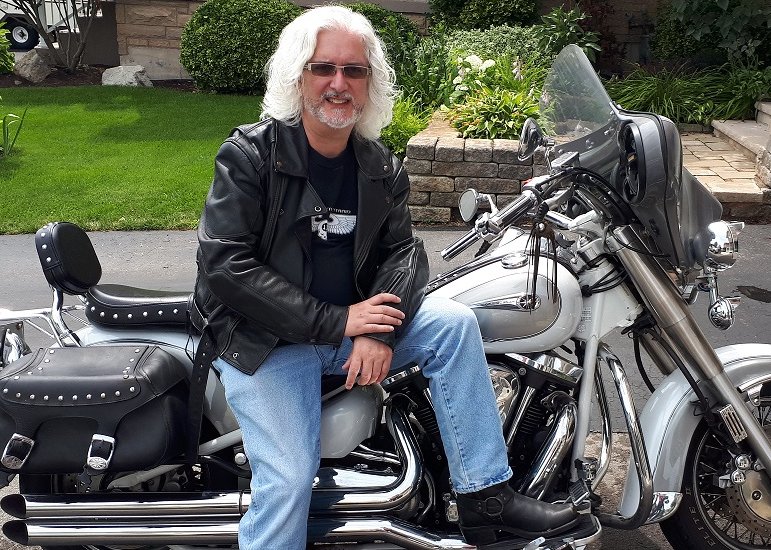
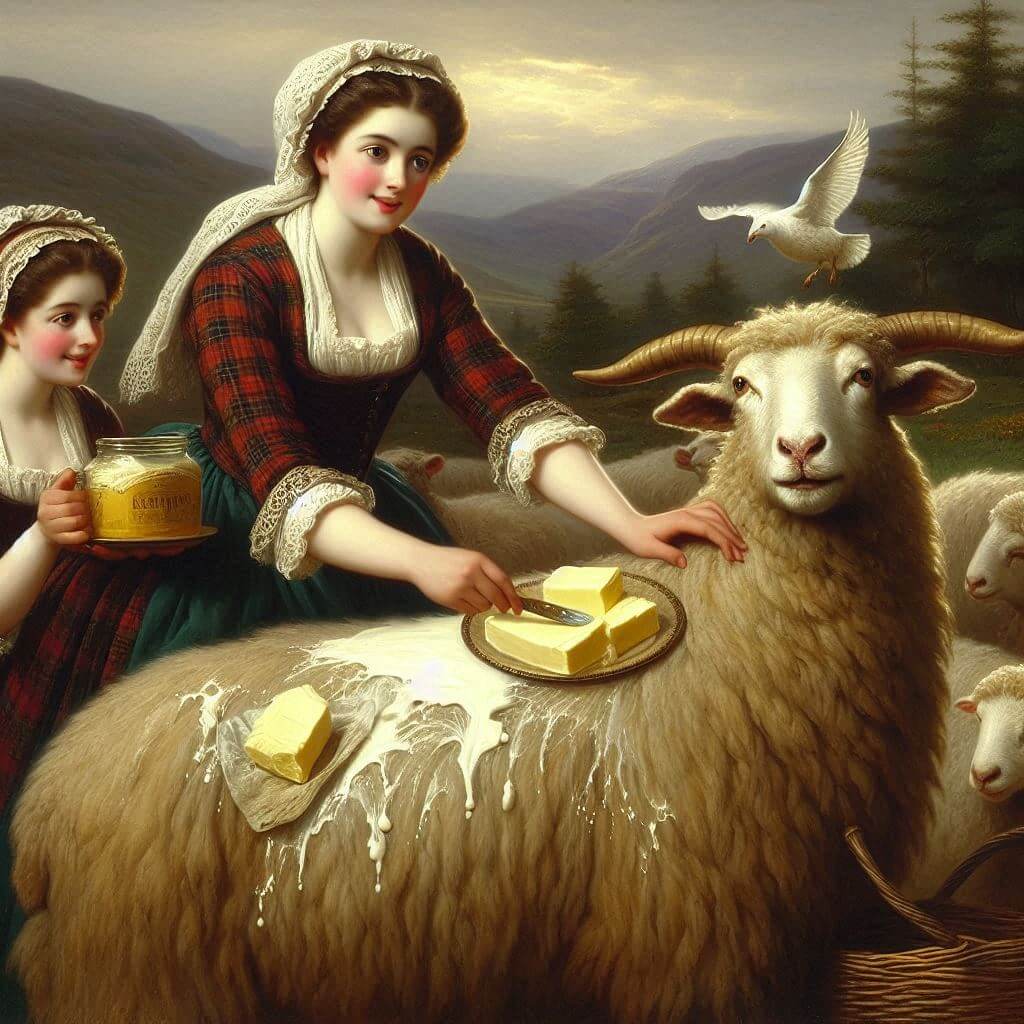
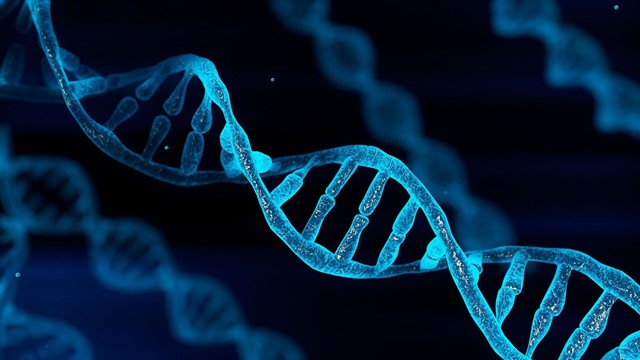

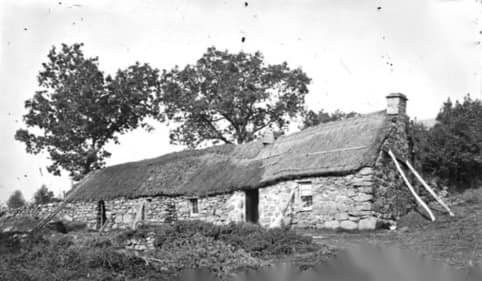
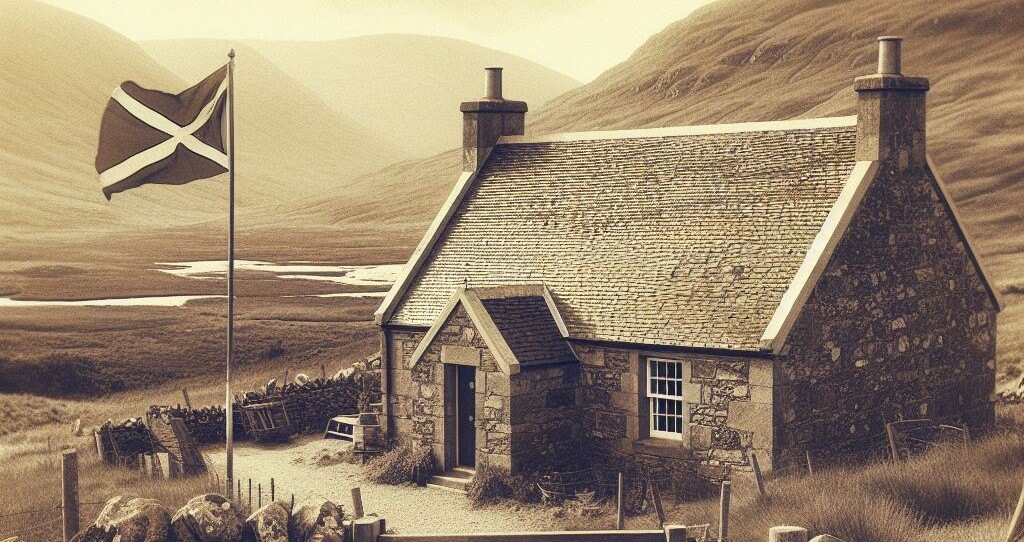
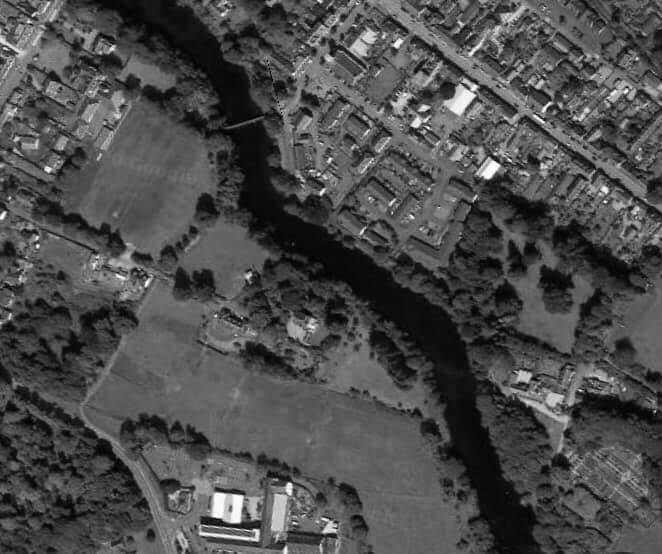
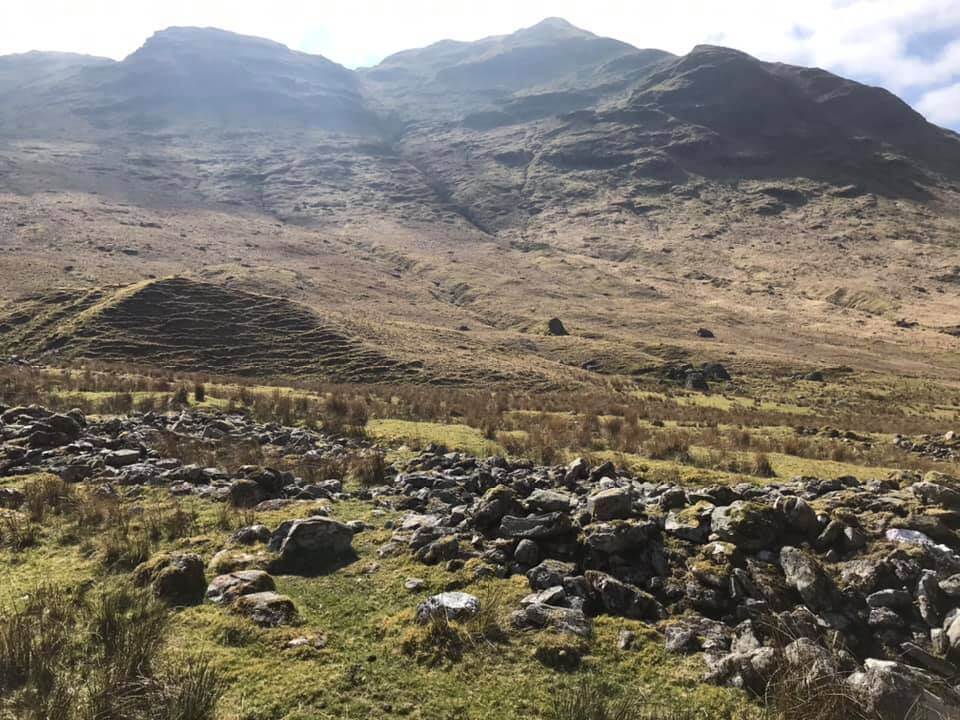
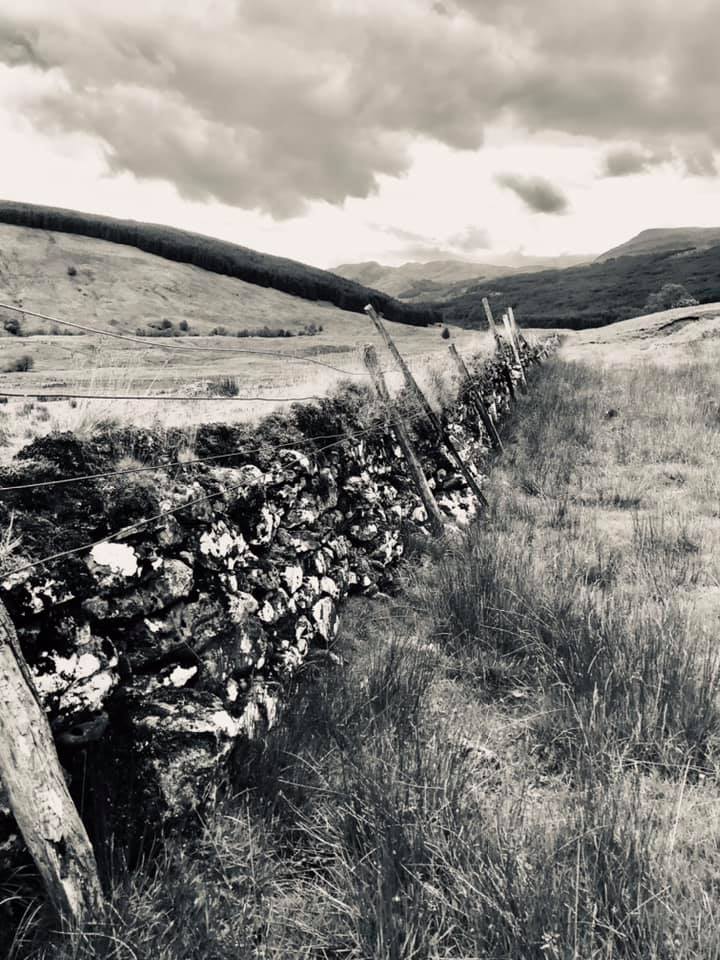
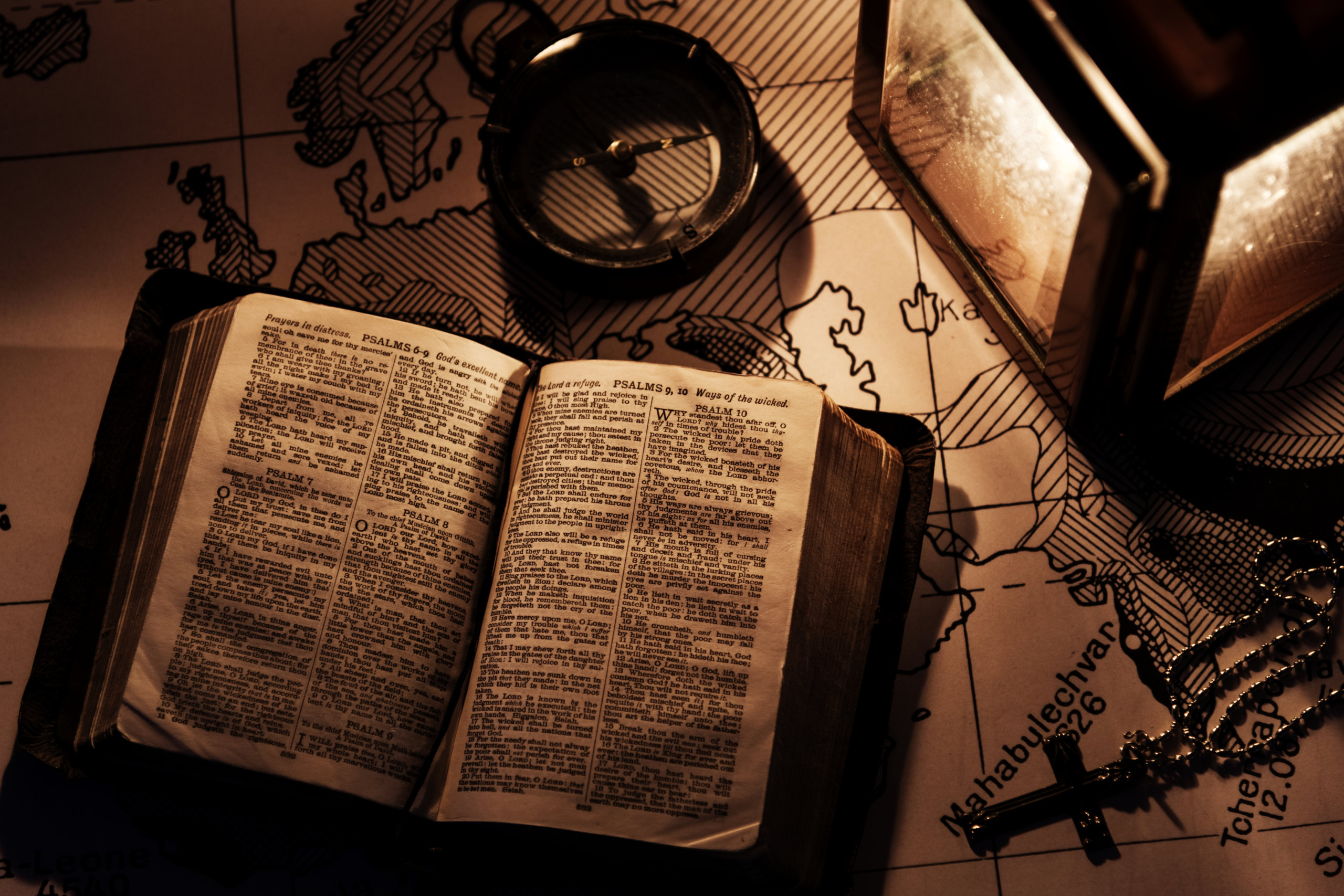
I read the following in the Stewart Website and came across a will while researching my wife’s Macfarlane family tree, which throws some more light on the life of David Hume Stewart of Ballachallon. I have transcribed the relevant text in the will and have placed it below
David Hume STEWART , 3rd of Ballachallan, 6th of Annat, and of Argaty b: ABT 1715 in Aberfoyle, Perthshire, Scotland. David Hume Stewart of Ballachallan purchased the property of Annat from his cousin John Stewart, 5th of Annat (above). He also acquired the lands of Argaty from his mother on 24 July 1752 and, according to the Stewarts of the South, he tried to swindle Robert Stewart, 7th Ardvorlich, out of the property of Ardvorlich. According to the same letter, David is described as “a keen grasping man closely attached to the world and not much to friendship”. He died without issue
WILL OF CAPT WALTER GRAHAM OF DRUNKIE Written 1758
Be it known that I Captain Walter Graham late of Sir Rob Rich’s Dragoons and proprietor of the Lands of Drunkie…. have been for some time in a bad state of health and finding my disorder rather increasing than abating I am resolved to dispose of my little effects and estate as follows.
The estate of Drunkie to be left with £150 to pay off my debts to Mr Graham of Gartmore and my brother in law Duggall Graham’s debts to Mr Graham of Gartmore to be paid and the heritable bond taken up with a proper discharge of this estate… is to be left to the true and lawful heirs of my father (who) was married a second time without any dispute or quibble so that it can be fairly proposed by a person authorised in that case the children legitimate have a right to the estate if not then it … to my brother in law Dugall Graham but this affair must be particularly enquired into and …. by the best lawyer as Mr Graham of Gartmore has a multiplicity of his own and brother’s business in hand and I will not trouble him any further with mine than for him to give his opinion in any puzzling point of law.
I propose three executors to my will, David Hume Stuart of Ballachalan who I am told made a promise to prevail with me to take care of his son and I likewise beg it of him as my cousin and the friendship that has always subsisted betwixt our families ….., Mr John Stuart of the blue anchor Little Britain and my brother in law Duggall Graham. Mr John Stuart has several papers which shall be remitted ………..
Mr Graham is to receive £50 … and Mr Hume Stuart of Ballachalan to receive £50 to appropriate to what use he pleases in remembrance of me …….
I hope this is of some interest to you,
Andrew
PS I enjoyed reading the fascinating history of the Stewart family. Congratulations to all those involved
Andrew, thank you for posting this. I would be interested in reading the full text of Graham of Drunkie’s will if you would be kind enough to send it to me. I will email you directly with my email address.
Thanks
Ryk